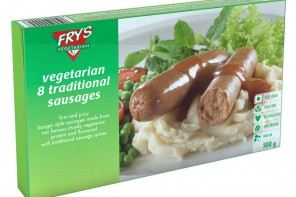Written by: Rob Peters
There are a huge amount of green renovations you can do to your house, some cheap and some, well, not-so cheap, but the up-shoot is that they are generally not only going to have a less damaging effect on the environment, but they are also going to save your bank balance.
And let’s be honest the second part is a big deal. It may not be the reason you decided to go green in the first place, but hell, if it’s saving you cash in the process, it’s certainly not going to hurt.
My wife and I recently bought a house and have over the course of the past three years have been upgrading. After a couple of months of research, it became clear that going green with the renovations not only limited the impact on the environment – saving on expenses at the same time – but also boosted the resale value.
The reason is that with the price of electricity and water on the rise – and showing no signs of a reversal anytime soon – more value is being placed on eco-friendly properties. Obviously not all of it is a cheap-fix, though, and the most expensive renovation, but arguably, the one that will save you the most in the long run is the installation of solar heating panels.
It was my first port of call as well.
There is a lot of competition in the market and I would advise doing some research before selecting the company to do the installation. Most important is to ensure that they are SABS approved and that you are eligible for the Eskom rebate.
Eskom runs a Solar Rebate Programme to promote the use of renewable solar energy. The programme offers financial rewards to households that install approved SABS accredited solar water heating systems. In other words, you benefit from going green.
Currently Eskom offers home owners rebates of 15 to 20% on the cost of installing solar water heating systems. The rebate can be anything from R3 853 to R9 702, but the real saving comes on the electricity bill.
At the moment I spend around R800 per month on electricity, that’s for a family of three, but the installation of solar panels projects a calculated savings of R31 967 over five years. Cost of installation varies on the unit installed, which depends on your needs, but it ranges from R15 000 to R25 000, so it’s up there as far as expense is concerned, but the savings are massive and with the rebate you could be looking at a considerable cut in price.
There are other major benefits apart from a cut in the monthly expenses. You will no longer be electrically reliant for hot water, it’s environmentally friendly and it increases the value of your property.
If that doesn’t hit home for you though, perhaps this will: my builder has recently had solar panels installed and is preparing to go fully solar at home. By doing so he will barely rely on Eskom, and with prices set to be hiked over the next couple of years, that is a smart move. In the not too distant future we are going to be hit hard by electrictiy costs and the less we rely on Eskom the better…
But for some of you it may be a bit too high an expense. So, if solar panels are a bit out of your current range, there are still plenty of things you can do to you property to spruce things up, raise the value, and keep it green. And most are pretty easy to sort out yourself.
Energy-saving showerheads, for example, operate 48 percent more efficiently than an average showerhead, which obviously results in significant water and heating cost savings. They are also easy to install yourself, so there is no need call in anybody, but be warned, stay away from cheap products because chances are they will not work. The best options are around R1000, so again its pricey, but the results more than make up for it.
One particularly cheap option if you’re looking to go green without breaking the bank, is a geyser blanket, which you can pick up for as little as R150 and install yourself. It comes with a kit, but if you’re not DIY – like me – you can always call on a mate to help you out. Water heating consumes almost 50 percent of the electricity used in a household and by installing a geyser blanket you reduce heat loss and the temperature of the geyser.
Another easy option is installing a water saving device into the toilet cistern. An even cheaper way is to make your own with a brick or a plastic bottle filled with sand! Every flush of the toilet uses 11 litres of water, so this is an incredibly simple fix.
There are a number of other renovations that can be done. Ceiling insulation can reduce heat losses through the roof by 80 percent, reducing both heating and cooling bills; ceiling fans, double-glazed windows and well-positioned awnings can also keep your home cool during the hot summer months. I have yet to look into these, but as we move forward they are all on the cards, as they should be for most homeowners.
One final thing you need to remember, and it’s an important one. Be sure to keep all invoices for any work done and to point out the renovations to your estate agent when listing the property for sale or for rent. It will help the estate agent to determine the selling price and/or monthly rental income of the property.
The liveeco team







